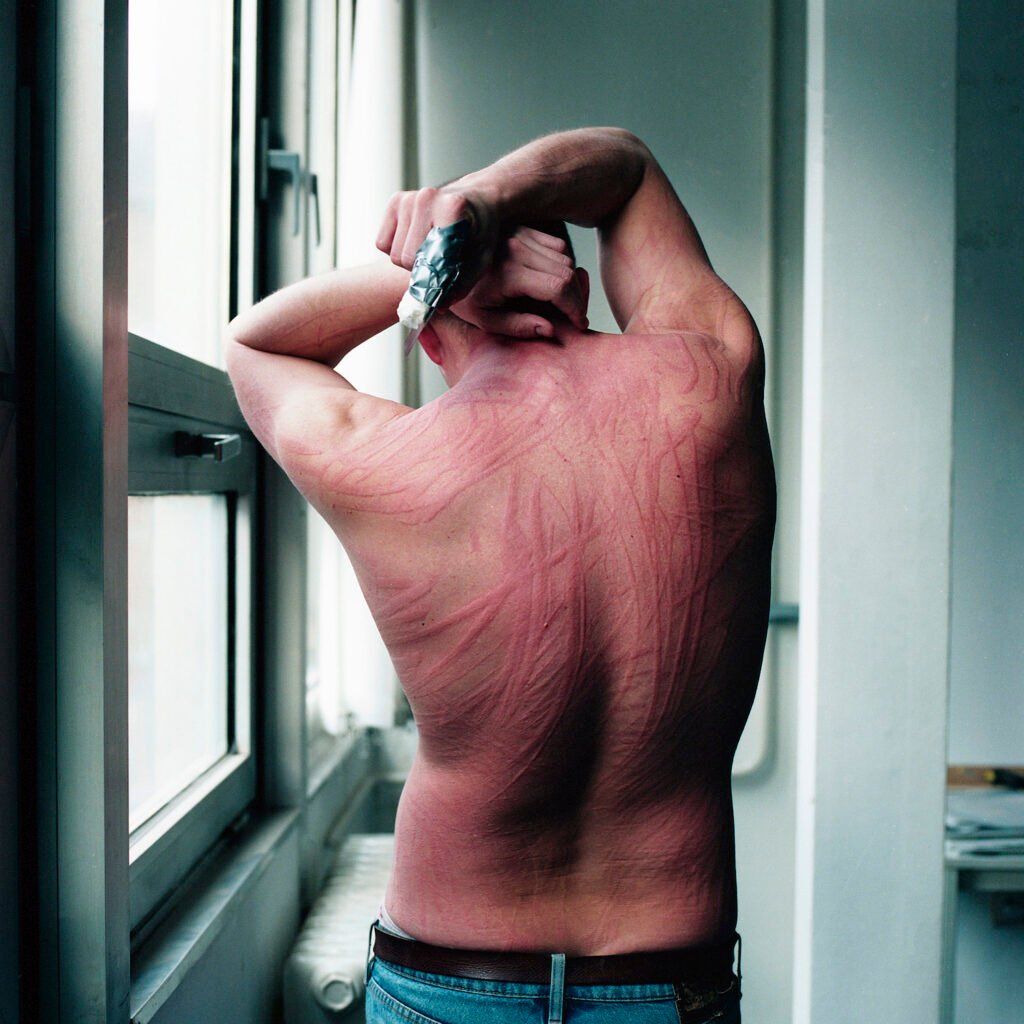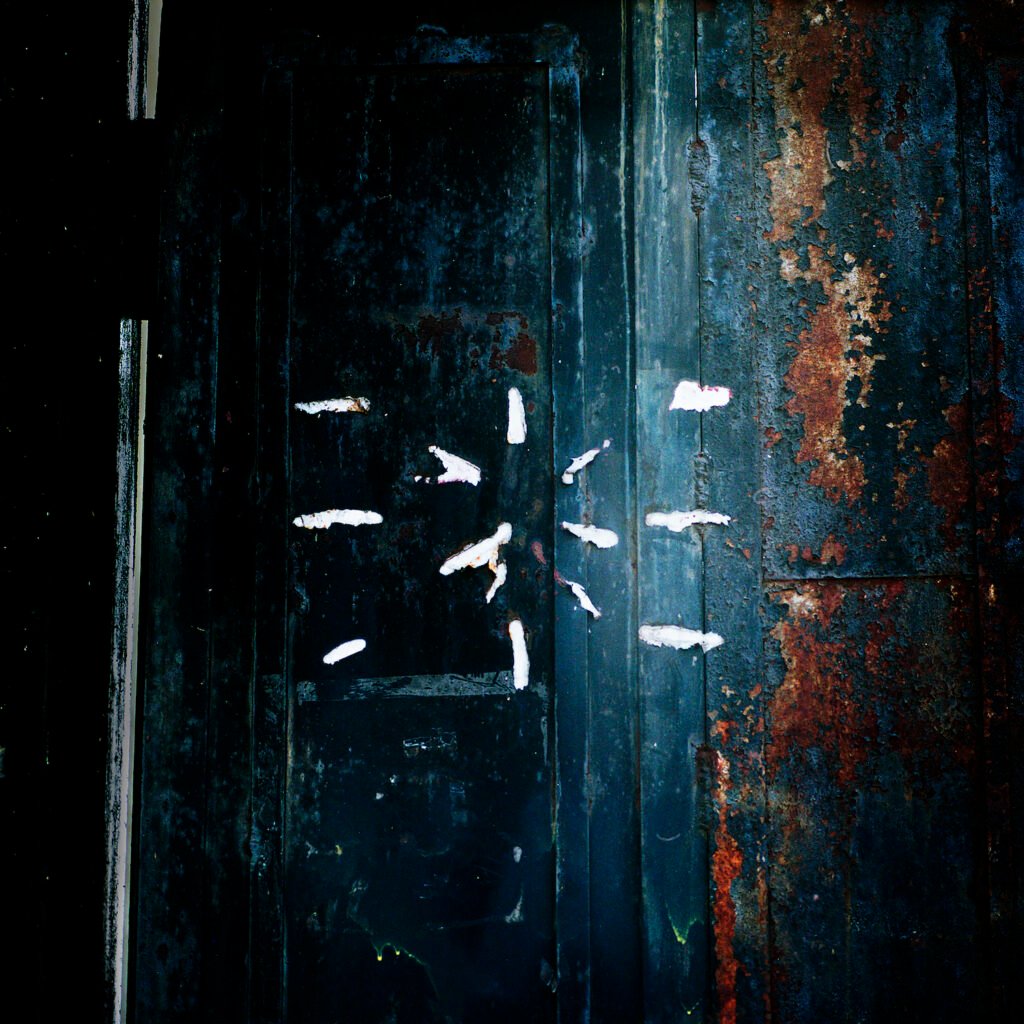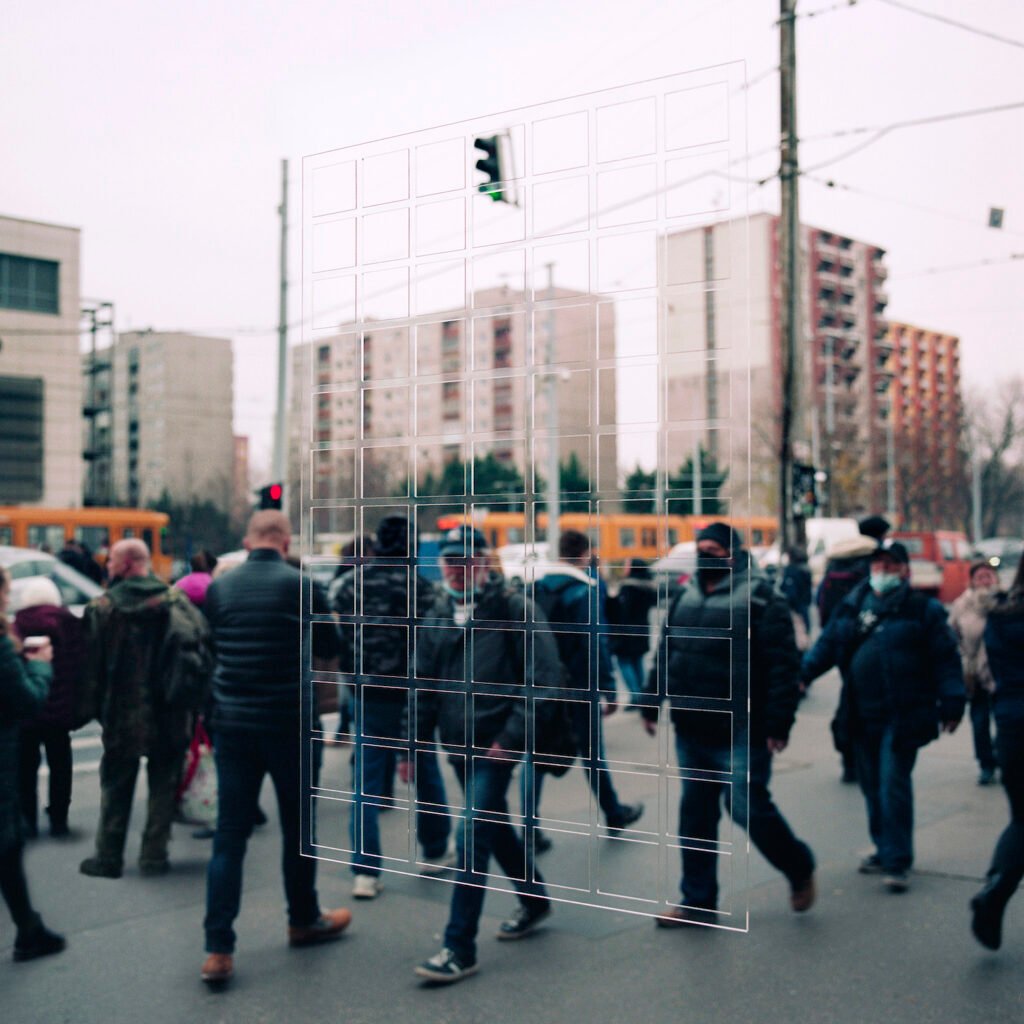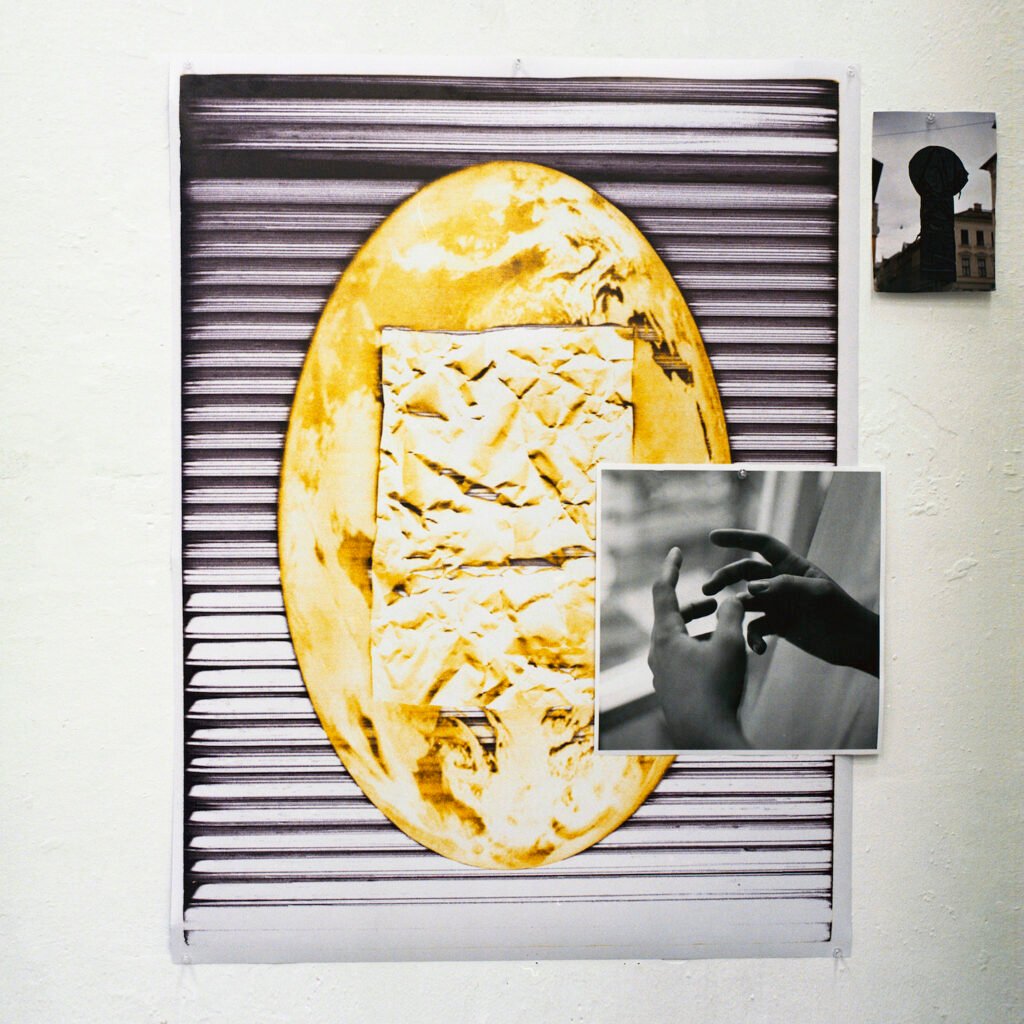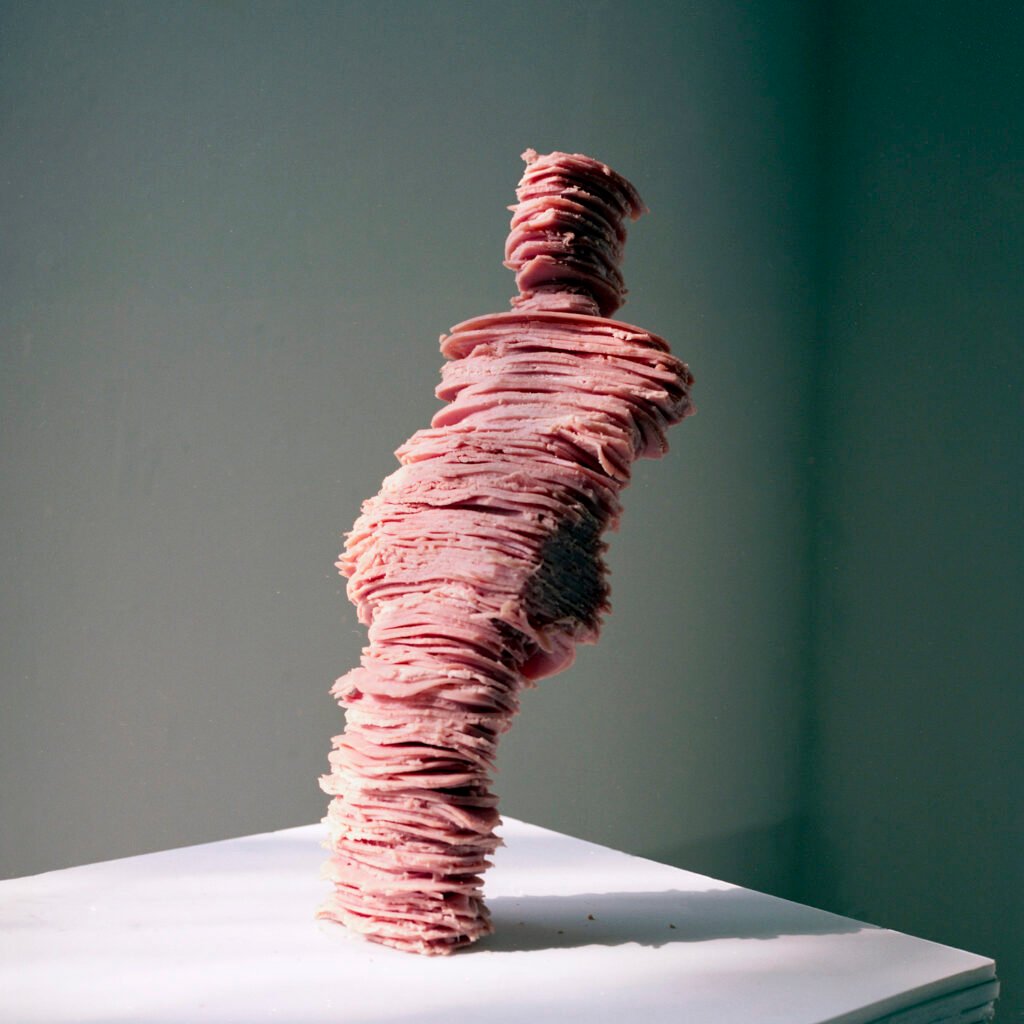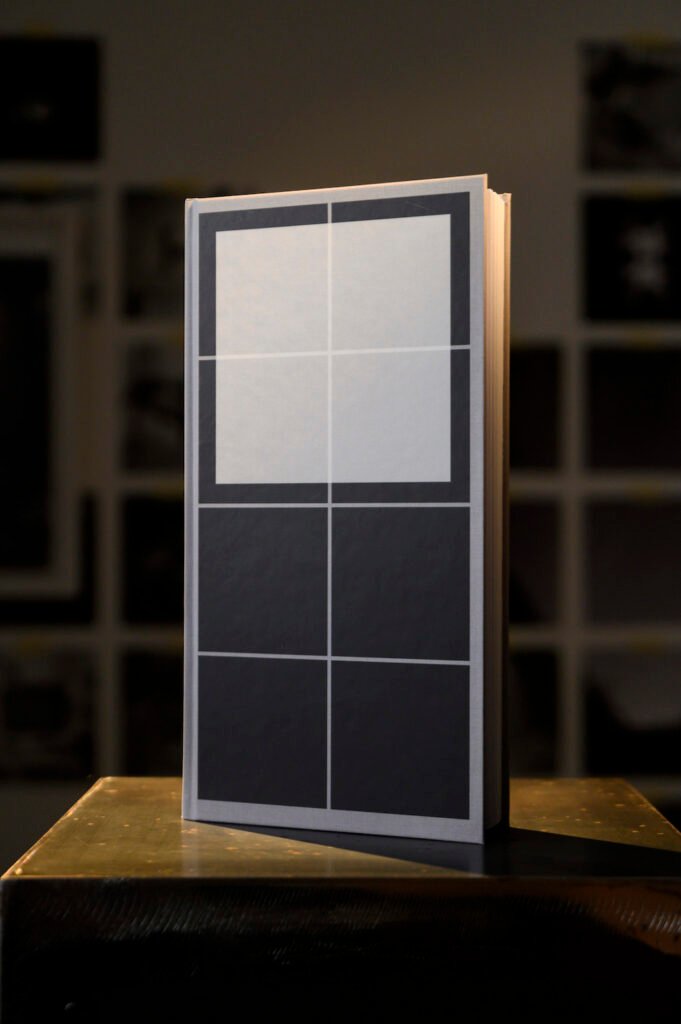In his latest project, Máté Bartha takes on the role of a fictive observer, to create a universe of images that unveil the hidden anatomy of the metropolis: a metaphysical mirror to human existence. Within his proposed book he uses only images, developing a special taxonomy of urban phenomena, deconstructing many genres of scientific publications, thus giving pride of place to personal interpretation and subjective experience. Patterns and different grid structures emerge on the pages, standing as an allegory for mankind’s endeavors to make sense to arbitrariness. Of all the precursors of the book, the enigmatic Voynich Manuscript of the 12th century, the works of 17th century philosopher, mystic and early scientist Robert Fludd, and their contemporary paraphrase, Luigi Seraphini’s Codex Seraphinianus had a particular significance to Bartha, as these volumes attempt to capture the (or a) world as a whole and paradoxically channel the contents in different indirect ways, requiring the reader to decipher the information within. Similarly, Anima Mundi is structured like an obscure encyclopedia, divided into chapters that present reality through the semantics of urban phenomena, interpreting these observations in an ever wider context from human society to a cosmic perspective. Anima Mundi is a poetic take on the desperate act of trying to find structure and meaning, a philosophical study of reality as subjectively lived and experienced, in this case, looking at the metropolis as the entirety of creation.
The project was funded by the József Pécsi National Scholarship for Photographers of Hungary, and developed through AFM – Art Foto Mode (Athens, Berlin, Budapest), H—The Notion of Humanist Photography Kaunas Gallery, and at the Cité des Artes Paris via the artist exchange programme of Budapest Gallery, Hungary.
“Since everything seen or said, even the slightest, most trivial thing, can bear a connection to the outcome of the story, nothing must be overlooked. Everything becomes essence; the center of the book shifts with each event that propels it forward. The center, then, is everywhere, and no circumference can be drawn until the book has come to its end,” expounds Paul Auster, as narrator, on the properties of a good detective novel in his book City of Glass. The first novel of the New York Trilogy is an anti-detective novel, the center of which keeps moving even after putting the book down—in lieu of being focused on the solution of the investigation, it gravitates around the searching process and the investigator himself.
Similarly, Máté Bartha’s latest project is a case of “investigation for investigation’s sake”, or rather, of “an observation for observation’s sake”. In his series, he wanders across the city like Daniel Quinn “who looks, who listens, who moves through this morass of objects and events in search of the thought, the idea that will pull all these things together and make sense of them.” (Paul Auster, New York Trilogy, Faber & Faber, 2008). He gathers together urban scenes and sights that usually stay unnoticed during the everyday use of the city, but their accretion and juxtaposition engender an unexplainable forcing need in those whose view them to try and interpret them in one way or another. What are they trying to convey and to whom? Whose interests are they serving? What (secret) drives control and organize them? His conceptual program thus centers on this systematizing impulse or activity always contributing meanings to phenomena right away and adumbrating causal or other connections between them.
Máté Bartha considers photography as his core instrument to create the visual of a mysterious all-time City and as devices to scan for stealthy connections and clandestine principles of organization lurking therewithin. In the Anima Mundi series, he musters images of real and staged scenery taken in different parts of the world and collages them together into an unidentifiable Metropolis or virtual location into which he then embarks on a quest to find “the order of things and the regularities of contingency”. Various grid structures that merge into the fabric of the city as metaphors of organization and structure; and posters, typical form of communication proper to public spaces are his recurring motifs. But the rasters and posters in the photos seem to offer little help regarding orientation or navigation – and there is no single answer to what they express, what logic they follow, or where they lead.
Presented as a book, Máté Bartha uses only images, and no words, giving pride of place to personal interpretation and subjective experience, and developing a personal mind map-like way of systematization, a special taxonomy of urban phenomena, deconstructing many genres of scientific publications (and photo books). Of all the precursors of the Anima Mundi project, the enigmatic Voynich Manuscript of the 12th century, the works of 17th century philosopher and mystic Robert Fludd, and a contemporary paraphrase to similar bodies of work, Luigi Seraphini’s Codex Seraphinianus had a particular significance to Máté Bartha. Part of these volumes attempt to capture the (or a) world as a whole and paradoxically channel the contents in different indirect ways, or via codes, which require the reader to act like a cryptanalyst to be able to decode hidden information..
Anima Mundi is also structured like an encyclopedia. After the introduction, it starts to focus on the basic forms, and shapes of phenomena around us; then continues with interpretation and systematization of the observations, and finally presents all of this in an ever wider context, from actual urban milieu to social context till a cosmic perspective. Anima Mundi is a poetic take on the desperate act of trying to find structure and meaning in the phenomena around us, a philosophical study of objectivity and reality (more generally) as subjectively lived and experienced, in this case, looking at the metropolis as the entirety of creation.
Essay by Emese Mucsi


Máté Bartha (1987), is a Budapest-based visual artist working in the fields of photography and documentary filmmaking. He’s interested in theory fiction, dealing with philosophical topics with a playful approach that involves impersonation and world-building. In 2014, he self-published his first book of photographs, Common Nature. His series Kontakt was awarded the Louis Roederer Discovery Award at the Rencontres d’Arles International Photo Festival in 2019. His latest project, Anima Mundi has been an Honourable Mention of the PhMuseum Grant Main Prize, and awarded the Jury Prize of Les Boutographies festival at Montpellier, both in 2024. Máté Bartha is represented in Hungary by TOBE Gallery.
